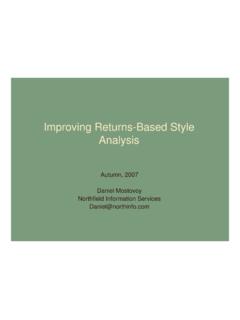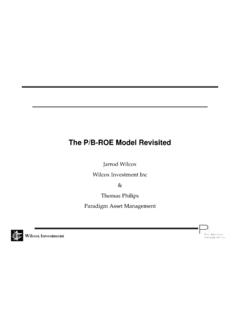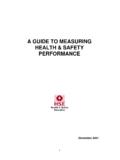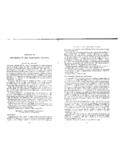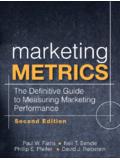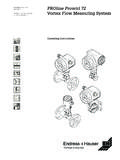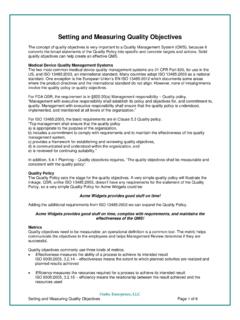Transcription of Measuring Investment Skill Using The Effective Information ...
1 1 Forthcoming in the Journal of Performance Measurement Measuring Investment Skill Using The Effective Information Coefficient This paper proposes a new portfolio performance metric called the Effective Information Coefficient. The EIC offers a key advantage relative to traditional performance metrics such as the Information ratio: rather than get one observation of portfolio return for each period of time to evaluate, we get a one observation per time period for each asset in the investor's permissible universe of investments. As such, sample sizes are much larger and we are able to obtain statistically significant performance evaluations much more quickly.
2 Introduction This paper proposes a new portfolio performance metric called the Effective Information Coefficient. The return performance of an Investment manager is often summarized by the Information ratio, the coefficient of variation of the active returns. Similarly, the predictive power of asset return forecasts made by Investment managers is summarized in a correlation statistic called the Information coefficient. When portfolio managers form portfolios of actual securities, some of this predictive power can be lost due to risk limitations, portfolio constraints and trading costs.
3 The extent to which the predictive power of the manager is translated into portfolio performance is usually summarized in a statistic called the transfer coefficient. We also know that most investors seek to have portfolios which are consistent with Markowitz's concept of mean variance efficiency, wherein portfolios are formed so that expected returns and risks are in balance at the margin. We will combine these three concepts into a new measure called the " Effective Information Coefficient" as a way of evaluating Investment Skill .
4 The EIC offers a key advantage relative to traditional performance metrics: rather than get one observation of portfolio return for each period of time to evaluate, we get a one observation per time period for each asset in the investor's permissible universe of investments. As such, sample sizes are much larger and we are able to obtain statistically significant performance evaluations much more quickly. Previous Research on Skill There are numerous performance metrics used as proxies for Investment manager Skill such as realized alpha, and Information ratio.
5 In practice, we rarely obtain statistically significant values for these measures because you need a long time series of active return data over which conditions are stable. Unfortunately, real-world conditions rarely are stable, making this form of evaluation problematic. It would be helpful to have a measure that uses more Information so we can get statistically meaningful results over a shorter time window. 2 Another important aspect to consider is that active managers occasionally experience very bad return outcomes for a period of time.
6 It would be valuable to investors to be able to discriminate a meaningful decline in a manager s Skill level from large, but random, negative outcomes. There is an enormous literature in finance regarding whether Investment managers collectively exhibit Skill . The answer to that question has important implications for the issue of market efficiency, and the theory of asset pricing. Most of this research is based on the concept of performance persistence . It assumes that those managers who perform consistently well must be skillful.
7 Examples of this research include Brown and Goetzmann (1995), Elton, Gruber and Blake (1996), and Stewart (1998). There is also an extensive related literature such as Brown, Goetzmann, Ibbotson and Ross (1992), Carpenter and Lynch (1999), and Carhart, Lynch and Musto (2002) that debates whether such persistence effects are artifacts of survivorship bias in the data used for empirical studies The issue as to whether or not managers collectively exhibit Skill is of limited consequence in this paper. The task before us is the evaluation of single managers.
8 For this purpose, there is a great deal of literature that centers on Using traditional return based performance statistics as proxies for manager Skill . The seminal paper is Kritzman (1986), introduced specific statistical analyses of past returns as a metric of Investment manager Skill . Other interesting papers include Marcus (1990) which incorporates the issue of selection bias, and Lee and Rahman (1991) which tries to distinguish between security selection and market timing skills among mutual fund managers. Bailey (1996) introduces a graphical approach to Skill detection.
9 As previously noted, the limiting conditions on use of time series performance statistics as measures of manager Skill are substantial. We must always have a sufficiently large sample of return observations while also meeting the statistical criteria for stationarity (stability of conditions). To the extent that the real world is constantly evolving, there is a natural tension between these two needs that makes it generally impossible to obtain statistically significant results on the performance records of individual managers when Using typical return observation frequencies ( monthly).
10 One simplistic fix to this problem is to use high frequency observations such as daily returns, but Using daily returns for Skill evaluation is problematic on numerous fronts. The conceptual and statistical difficulties are detailed in diBartolomeo (2003) and diBartolomeo (2007). Some researchers have tried to detect manager Skill , or changes in the level thereof, Using statistical process control methods. Philips, Stein and Yaschin (2003) use CUSUM methods to directly evaluate active manager performance. Bolster, diBartolomeo and Warrick (2006) use CUSUM as a method for detecting regime change so as to isolate the most relevant portion of a manager s track record for evaluation.

